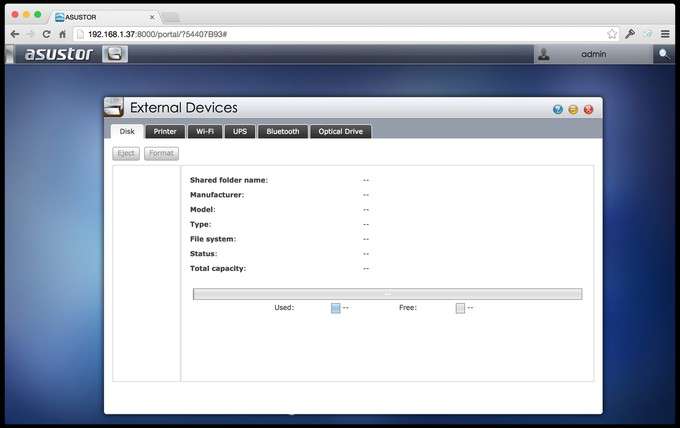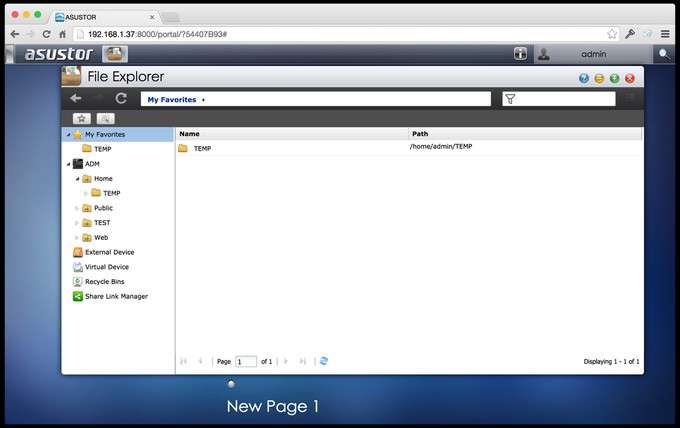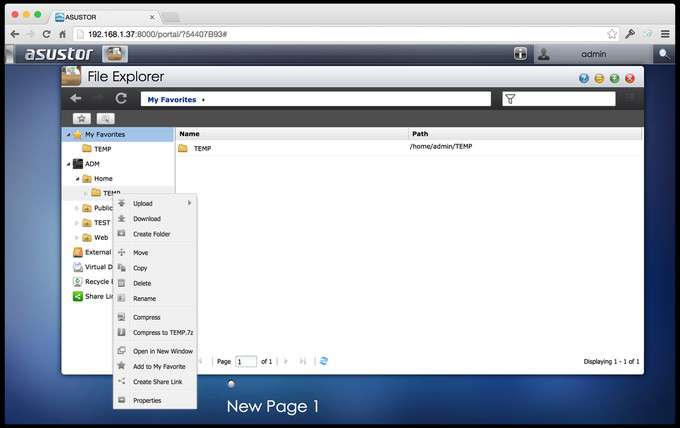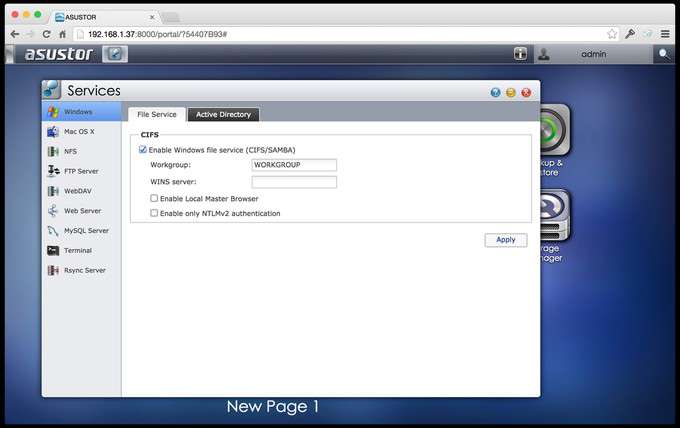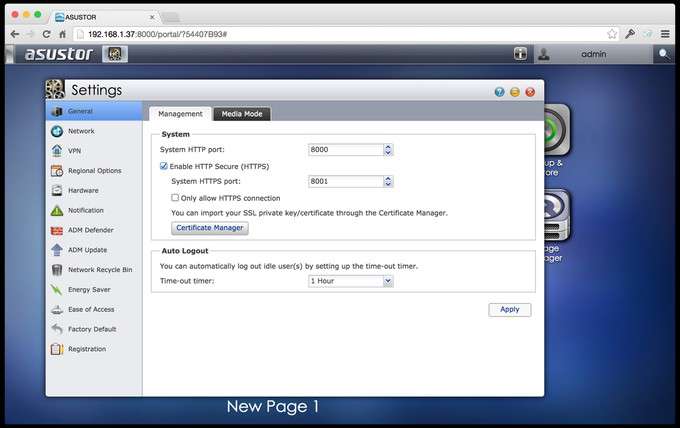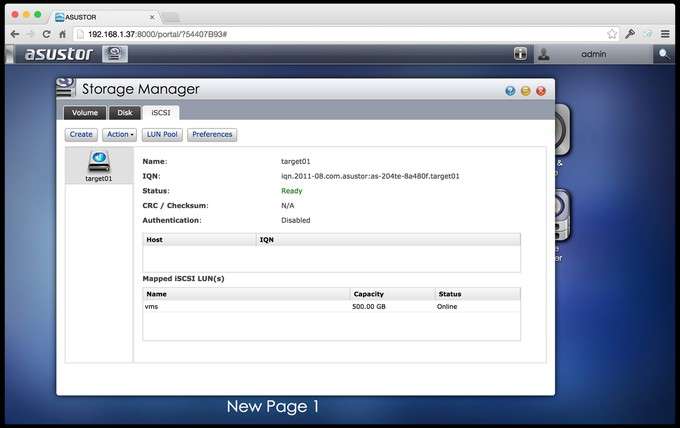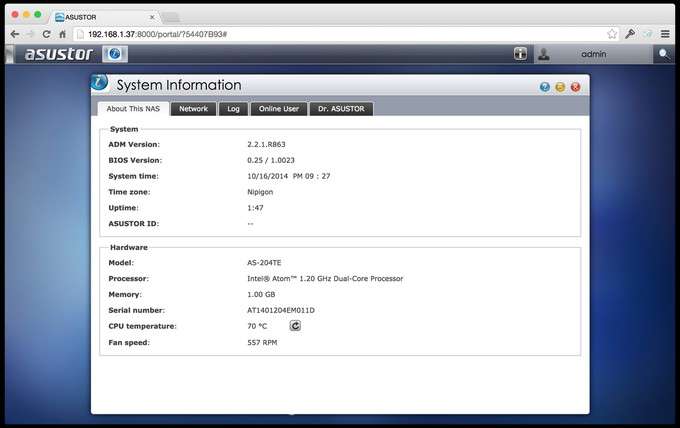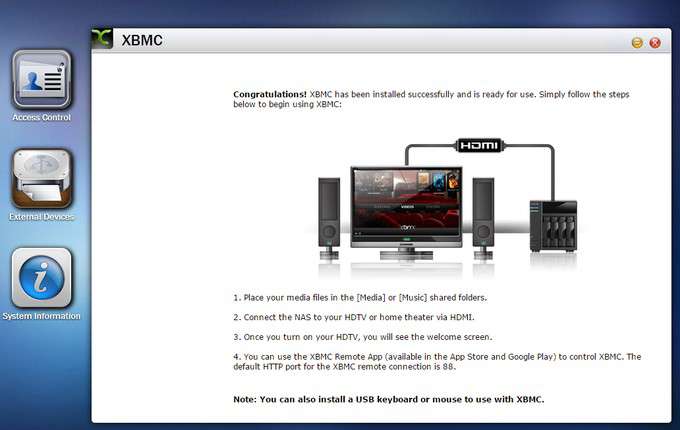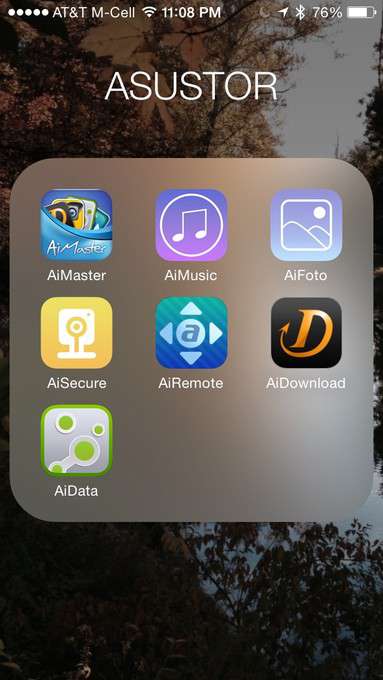- Qualcomm Launches Snapdragon 4 Gen 2 Mobile Platform
- AMD Launches Ryzen PRO 7000 Series Mobile & Desktop Platform
- Intel Launches Sleek Single-Slot Arc Pro A60 Workstation Graphics Card
- NVIDIA Announces Latest Ada Lovelace Additions: GeForce RTX 4060 Ti & RTX 4060
- Maxon Redshift With AMD Radeon GPU Rendering Support Now Available
ASUSTOR AS-204TE 4-bay NAS Review

We have taken a look at many NAS solutions over the years, but it’s not often that we get to check out a model from a vendor we’ve never had the chance to look at before. So, it’s with great intrigue that we check out ASUSTOR’s AS-204TE, a four-bay NAS solution designed for home use.
Page 2 – A Look At The Software Cont., Testing & Final Thoughts
The back of the AS-204TE has three USB ports. One is USB 3.0 and the other two… well, the other two are 2.0. These USB ports can be used to connect with a myriad of other devices. An external disk can be attached, as stated before, for backing up the data on the NAS.
A printer can be connected and shared across the network. If wireless access is required, a dongle can be connected to allow access wirelessly. Should a UPS be used, this too can be attached for monitoring. Finally, Bluetooth and optical drives can be attached, though with this particular model having RF built in, the need for Bluetooth seems less likely. Regardless, the option is there.
As more and more files are added to the AS-204TE, sometimes it’s easer to browse through the web-based file explorer. In this screen, every mounted volume can be explored, including a recycling bin (in enabled) and virtually connected devices. This is a very robust solution with many of the file manipulation capabilities that we have become accustomed to having to at a desktop level available within the AS-204TE’s web GUI.
As we touched upon when looking at user settings, the AS-204TE can be joined as an object to an Active Directory environment. This can be achieved in the Services screen. Also located here is MAC OS X permissions, NFS storage protocol permissions, FTP server, WebDAV, Web Server (apache) MySQL, terminal and rsync server. While these options are standard on a lot of NAS platforms, ASUSTOR’s decision to include many of these natively in their firmware is appreciated.
Outside of the users and folders screens, the most commonly used area of the AS-204TE’s firmware is going to be the settings page. Here is command central for the AS-204TE. General settings can be set, like device name, HTTPS enabling, IP addressing and time zones. Additionally, users can control the LED brightness, fan speed, alert volume and method of updating. ADM Defender is something that ASUSTOR has built into their firmware. Think of this as a software firewall. Access can be given or denied through this section of the settings screen.
On the Storage Manager screen, disk pools can be created and volumes constructed. For those with the need, iSCSI can be setup as well. For our testing, an iSCSI LUN was created and attached to our testing machine but more on that in a bit.
Finally, there is the System Information screen. Here users will find all of the important information about the NAS, including firmware version, hardware information, network and connection information. There is also a tab on this screen called “Dr. ASUSTOR”. This is an application that will run and check if all settings are correct and offer advice on ways to improve the user experience. For power users this will not be helpful but for many that fall outside of that classification, there is likely some good advice to be had.
XBMC, Testing, Mobile Apps and Conclusion
One of the primary draws of the AS-204TE is its HDMI out. With this, there are additional reasons to consider the NAS. Intending the NAS to be used in a media center capacity, the HDMI out on the AS-204TE allows ASUSTOR to provide popular applications such as XBMC. This gives the user the ability to connect the AS-204TE to their television and use the NAS an all-in-one media center.
I currently have an HTPC purposely build to run XBMC. My media is currently housed on a FreeNAS box and presented to the XBMC app across the network. This allows me to have a small HTPC in my living room and a large central repository elsewhere in the house, but still on the network. With the AS-204TE and it’s four bay capacity, the NAS acts as compute resource to run XBMC as well as storage for all that music and video.
Through the App Center, XBMC can be installed. For the AS-204TE, as of publication of this review, version 12 was the latest available. The latest stable build available from XBMC themselves is 13.2. So, you are sacrificing version levels (and all that go with them) by running the AS-204TE as your HTPC, but in our testing, it is 100% stable and all the add-ons to XBMC that we tried worked as well. The reasoning for the version difference no doubt lies in the facts that the AS-204TE runs an ATOM processor as well as it’s being tailored to run on the NAS by ASUSTOR themselves. Newer 13.x version have been confirmed to run on newer ASUSTOR NAS devices, but for the AS-204TE, this is what you get at this time.
Certainly not scientific, but in our testing, a high quality, 1080p Blu-Ray rip of “Captain America: Winter Soldier” was played. While this was playing on the television, I used the web interface and a UNC share to kick off a robocopy FROM my local desktop to a share on the AS-204TE. This consisted of approximately 10GB of random files. While this was running, I copied the same Captain America .mkv file FROM the AS-204TE to my local desktop. With data being transferred in both directions, and the movie playing on the television, not once did the movie stutter. Again, this is not a very scientific test, but it does go to show that the AS-204TE can be used in a typical NAS capacity while being used as a HTPC as well. +1 for the AS-204TE in this particular test.
Another area that ASUSTOR has added value to the AS-204TE (all their devices really) is through the use of mobile apps. Available for iOS and Android, multiple apps are available to meet the needs of most functions of the AS-204TE.
In the past, we have conducted straight file copies to and from the NAS devices. Using large single files and directories with thousands of smaller ones, we were able to get a real world idea of read and write speeds when averaging out multiple run. This has treated us well, and is a method still used by others, but going forward, we have a new tool in our belts.
A few years ago, Intel created their own benchmarking tool for NAS devices called NASPT. Short for NAS Performance Toolkit, NASPT is, to quote Intel themselves, “a file system exerciser and analysis tool designed to enable direct measurement of home network attached storage (NAS) performance.) Essentially what they did was create a tool that mimics day-to-day workloads such as video playback, content creation and office productivity application emulation.
By creating this tool, Intel has made it extremely easy on those of us tasked with benchmarking NAS devices. You install NASPT on a host machine (their recommended specs are 32-bit XP SP2 and 2GB of RAM), map a drive on that host that points to the NAS and decide which tests you want to run. These are the specs that I used when building out our test machine.
- Dell Optiplex 755
- Intel Core 2 Duo E6550
- 2GB DDR2 RAM
- 320GB Seagate 7200K
- Integrated Video
- Intel PRO/1000 PT Dual Port NIC
Our test bed is a simple, everyday machine that I happened to pick up cheap on Craigslist. It’s a capable PC and one that worked perfectly for the NASPT test. While getting a bit long in the tooth, we continue to use it to keep our results consistent and comparable. This will be changing soon but for now, this is what was used.
For our iSCSI tests, a Windows 8.1 machine was used. It’s specs are:
- Intel 2500K
- Gigabyte Motherboard
- 4GB DDR3
- 640GB WD Black 7200K
- Integrated Video
- Intel Pro/1000 PT Dual Port NIC
The disks we are using in the AS-204TE are a pair of WD RED 2TB drives.
| Robocopy | |
| Read | 94.8 MB/s |
| Write | 72.6 MB/s |
| iSCSI Performance | |
| Read | 89.1 MB/s |
| Write | 82.4 MB/s |
| Intel NASPT | |
| HD Playback | 76.2 MB/s |
| 2x HD Playback | 86.7 MB/s |
| 4x HD Playback | 85.9 MB/s |
| HD Video & Record | 89.8 MB/s |
| HD Playback & Record | 75.2 MB/s |
| Content Creation | 9.1 MB/s |
| Office Productivity | 44.9 MB/s |
| File Copy to NAS | 80.2 MB/s |
| File Copy from NAS | 83.3 MB/s |
| Directory Copy to NAS | 6.2 MB/s |
| Directory Copy from NAS | 12.3 MB/s |
| Photo Album | 9.7 MB/s |
It’s not everyday we get to test a product out from a new company. While not brand new, ASUSTOR is certainly the new kid on the block compared to more established NAS vendors. That being said, the AS-204TE was a delight to work with and a device that will provide years of use to its owners. The performance numbers aren’t record setting, but they are respectable. With that said, performance numbers aren’t always an indication of value. Unless a device is painfully slow, transfer times are less important when used in scenarios that don’t require speedy access to data. This is not us making an excuse for the AS-204TE, it doesn’t need any as it was plenty fast, but more an indication that regular users that might purchase this NAS for home use can do so knowing that it will provide all that they need.
The addition of an HDMI port on the AS-204TE is huge, and something that I would like to see more companies adopt. We are finishing up testing on a QNAP NAS that has HDMI and it’s nice to see more and more devices with this capability. Not only for video and audio output, I would like to see HDMI and it’s incredible bandwidth capacity be used for storage expansion as well. But, I digress.
The ASUSTOR AS-204TE is a winner to all but the most critical of users. For them, a more powerful device will be sought out anyway. However anyone looking for a device that can pull double duties as networked storage and HTPC should put the AS-204TE at or near the top of their list. ASUSTOR is still a young company but their team comes from many big names in the industry and we look forward to what they have coming in 2015.
Support our efforts! With ad revenue at an all-time low for written websites, we're relying more than ever on reader support to help us continue putting so much effort into this type of content. You can support us by becoming a Patron, or by using our Amazon shopping affiliate links listed through our articles. Thanks for your support!




